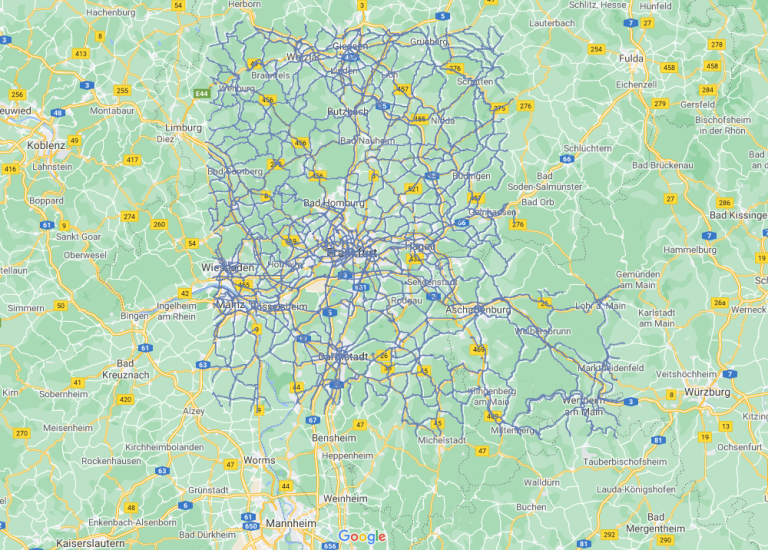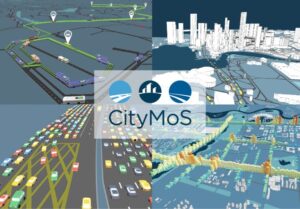Digital Twin for CiLoCharging The CiLoCharging project aims to enable an optimized, flexible, and demand-oriented solution for the integration of charging, logistics, energy, and mobility management for the use of electric vehicles in logistics depots close to the city. The developed solution needs to be evaluated from an economic, technical, as well as environmental perspective […]
Read MoreScenario Development for CiLoCharging
In the context of CiLoCharging, the Technical University Munich (TUM) has the main role of evaluating the approaches and algorithms developed in the project by creating a so-called “digital twin”. The “digital twin” can then be used as a digital playground or a test lab for the cost- and time-efficient holistic evaluation of the developed system. TUM uses CityMoS, a microscopic, agent-based, discrete-event simulator developed by TUMCreate, a research institute of TUM in Singapore.
Scenario development is one of the first steps in the creation of the “digital twin” in CityMoS. In order to efficiently evaluate the developed test scenarios, various aspects of the simulation should be modelled in sufficient detail. The following sections briefly illustrate the progress made in the creation of the road network, generation of truck itineraries and the calibration of background traffic.
Road Network
The road network is the most vital ingredient for any microscopic traffic simulation. For the creation of the digital twin, the required road network is specified by a bounding box that defines the target area for the simulation. The Bounding box is set based on data collected from the trips of the DHL delivery trucks recorded over a week in the depot at Maintal, near Frankfurt. The required details of the map were extracted from OpenStreetMap to be used in the simulation in CityMos. The road network was then rigorously tested on CityMoS by running random trip simulations, and applying necessary fixes in order to have the road network ready to be used in the simulations for the project.

For visualization purposes, details regarding buildings, farmlands and water bodies are also collected from the OpenStreetMap. This enables better visualization when CityMoS3D is used for running the simulation.

Background Traffic
The results from the mobility simulation are more reliable with a calibrated background traffic that reflects real world traffic. For this purpose, Mobilität in Deutschland (MiD) dataset was collected from the Federal Ministry for Digital and Transport (Bundesministerium für Digitales und Verkehr (BMDV)). The collected data from the MiD dataset reflects the trips made by individuals in a city for the entire Germany, therefore, the dataset was filtered to leave just the data that is related to the area specified by the bounding box. An origin-destination matrix was then created for the agents in the simulation to reflect real world traffic on a typical day.

Truck Itineraries
Truck trips data of DHL trucks was provided by DHL Freight for trips made in the area of Maintal for a week. The collected data was used to generate trips for the trucks, which is then incorporated in CityMoS. As a next step, extensive work will be done on modeling electric fleets and depots with charging stations.

Shows the trace of a truck from the depot to its delivery locations
What's next?
A preliminary “digital twin” of the area of Maintal is developed in CityMoS using the pre-described road network, background traffic and the DHL truck itineraries. Further work will be carried on by the team at TUM in order to improve the “digital twin” by implementing and extending the electric fleet models and the depot models in CityMoS. As an outcome, a full-fledged “digital twin” of Maintal will be ready to be used to evaluate different scenarios, operational strategies, and optimization models developed in the CiLoCharging project.
Find out more
SMART Goals
SMART Ziele Die Arbeitsziele sollen „Spezifisch, Messbar, Anspruchsvoll, Realistisch, Terminiert“ (SMART) sein. In diesem Rahmen lassen sich für CiLoCharging folgende SMART-Ziele definieren: Smart-Ziel 1: Optimierung des Lademanagements im Logistikterminal mit Integration des Verkehrsmanagement und der Energieversorgung Die Projektpartner entwickeln eine bedarfsgerechte, flexible „Optimization-as-a-Service“ Komponente, die unter Einbeziehung aller relevanten Eingangsdaten aus den einzelnen Domänen die […]
Read MoreWhat is CiLoCharging?
CiLoCharging Optimized integration of charging, logistics, energy and traffic management for the operation of electric vehicles in urban logistics depots. The CiLoCharging project has set as its goal to enable an optimized, flexible and demand-oriented solution for the use of electric vehicles in the distribution service of a logistics terminal from an economic, technical, and […]
Read More


